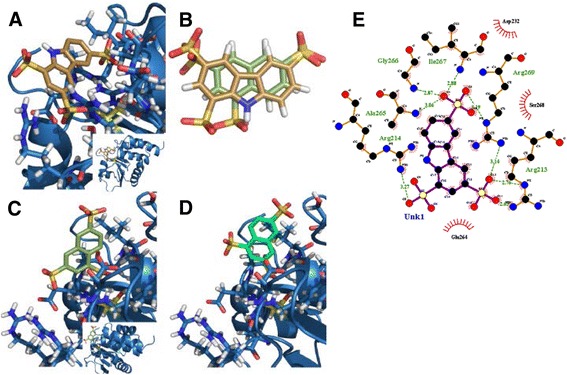Fig. 2.

Docking Results. a Predicted docking pose of SM1842/RR505 (gold) in DUSP5 PD (blue), using Autodock 4.2. The inset image shows predicted binding position relative to the rest of the protein. The side chains around the bound ligand (mostly arginine guanido groups) are delineated in light turquoise and the catalytic cysteine is displayed in yellow. Three arginine residues are observed around one sulfonate group of SM1842/RR505. The calculated binding energy for this pose was -9.69 kcal/mol and had a cluster population of 10. b Optimal overlay of SM1842/RR505 (gold) and naphthalene trisulfonate (NTS, moss green), using OpenEye Scientific Software ROCS v. 3.0 [26]. c Lowest energy binding pose for NTS (moss green) in DUSP5 PD (blue), with a calculated binding energy of -8.48 kcal/mol with a cluster population of 7. d Second lowest energy binding pose for NTS (seafoam), with a calculated binding energy of -8.21 kcal/mol. e Ligplot drawing of SM1842/RR505 in the DUSP5 PD binding pocket, showing key interactions
